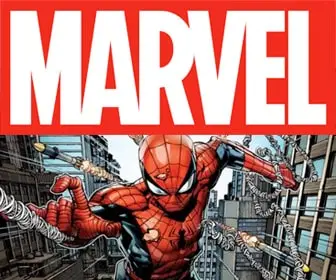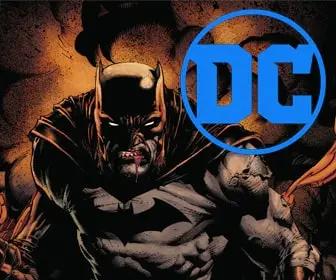
Empowering Artists: A New Era in Comics
Creator-owned projects are works where the creators keep the rights to their work. This means they have full control over their stories and characters. They can decide how to use them, without needing approval from a big company. This freedom lets them explore new ideas and tell unique stories. In the comic book world, this is important for artists and writers who want to share their original visions with readers.

History of Creator-Owned Comics
Early Examples
One early example of a creator-owned comic is “Cerebus the Aardvark” by Dave Sim. It started in 1977 and was one of the first comics where the creator kept all the rights. Another important example is “Elfquest” by Wendy and Richard Pini, which began in 1978. It was a big success and showed that creator-owned comics could be popular. These early examples helped pave the way for more artists and writers to create and own their own comic book stories.
Creator Rights
In the comic book industry, creators have often struggled to keep the rights to their work. In the past, big companies usually owned the rights to the characters and stories, not the creators. This meant that the creators didn’t always get fair pay or credit for their work. Over time, many artists and writers fought for better rights. They wanted to own their creations and have more control over their work. This struggle led to changes in the industry, and now more creators can own their projects and have a bigger say in how their work is used.
Key Milestones
Several key milestones have marked the recognition of creator-owned projects in the comic book industry:
- The rise of independent publishers: In the 1980s and 1990s, independent publishers like Image Comics and Dark Horse Comics emerged, offering creators a platform to publish their own work and retain rights.
- Success of creator-owned series: Comics like “The Walking Dead” by Robert Kirkman and “Saga” by Brian K. Vaughan and Fiona Staples have shown that creator-owned projects can be hugely successful, both critically and commercially.
- Digital platforms and crowdfunding: The advent of digital platforms like ComiXology and crowdfunding sites like Kickstarter has made it easier for creators to publish and fund their own projects, reaching a wider audience.
- Legal battles and advocacy: High-profile legal battles and advocacy efforts by organizations like the Comic Book Legal Defense Fund have raised awareness about creators’ rights and helped establish fairer practices within the industry.
- Mainstream recognition: Creator-owned projects have gained recognition in mainstream media, with adaptations into movies and TV shows, further validating the importance and viability of creator-owned work in the entertainment industry.
Advantages of Creator-Owned Projects
Creative Freedom
Creator-owned comic books give artists and writers a lot of creative freedom. This means they can tell the stories they want, in their own way. They don’t have to follow rules set by big companies. They can create new characters, explore different themes, and experiment with their art and writing. This freedom lets them share their unique visions and ideas with readers. It also helps bring fresh and diverse stories to the world of comics.
Financial Potential
Creator-owned comics offer the chance for financial success and owning your ideas. When creators keep the rights to their work, they can make more money from sales, merchandise, and adaptations like movies or TV shows. They have control over how their work is used and can profit from it in different ways. This ownership is important because it means creators are rewarded for their creativity and hard work. It also allows them to build their own brand and have a lasting impact in the comic book industry.
Challenges Facing Creator-Owned Projects
Financial Risks
Creating your own comic book can be risky. Unlike working for a big company, creators have to pay for things like printing and advertising themselves. If the comic doesn’t sell well, they might lose money. Also, the comic book market can be unpredictable. It’s hard to know if readers will like your story or if it will stand out among many others. These financial risks and uncertainties can be challenging, but they are part of the journey of bringing your own creative vision to life.
Marketing and distribution hurdles
Marketing and distribution can be tough for creator-owned comic books. Without the support of a big publisher, creators have to find ways to get their comics out there. They need to promote their work on social media, at comic book conventions, and through other channels. Getting comic books into stores can also be a challenge. Creators often have to work with distributors or sell their comics online. These hurdles can be hard, but they also give creators a chance to connect directly with their readers and build a loyal fan base.
Competition with established publishers
Creator-owned comic book publishers often face tough competition from established publishers. Big companies like Marvel and DC have popular characters, big budgets, and strong marketing. This can make it hard for smaller, independent comics to get noticed. But many readers are looking for new and different stories. So, there’s still a chance for creator-owned comics to find their audience. They just have to work hard to stand out and offer something unique that readers can’t find in mainstream comics.
Notable Creator-Owned Success Stories
There are many examples of successful creator-owned comic books. “Saga” by Brian K. Vaughan and Fiona Staples is a popular series known for its unique story and beautiful art. “The Walking Dead” by Robert Kirkman became a huge hit, leading to a TV show and other spin-offs. “Sandman” by Neil Gaiman is another famous comic that has won awards and gained a loyal fan base. These comics show that with creativity and hard work, creator-owned projects can achieve great success and leave a lasting mark on the world of comics.
The Future of Creator-Owned Comics
Creator-owned projects have the potential to shape the future of storytelling in comics. With more freedom, creators can explore new ideas and tell diverse stories that might not fit in mainstream comics. This can lead to fresh and exciting content that attracts a wider audience. As more creators choose to go independent, we might see a shift in the comic book industry towards more varied and innovative stories. This change could inspire a new generation of artists and writers to share their unique visions, making the world of comics even richer and more interesting.
Collectors
Here are five comic book issues that every fan of creator-owned comic books should consider owning:
- “Saga” #1 by Brian K. Vaughan and Fiona Staples: This issue marks the beginning of an epic space opera that has become a modern classic in the creator-owned genre.
- “The Walking Dead” #1 by Robert Kirkman and Tony Moore: The first issue of this groundbreaking series introduced readers to a world of survival and horror that would go on to become a cultural phenomenon.
- “Sandman” #1 by Neil Gaiman and Sam Kieth: Although technically published by DC’s Vertigo imprint, “Sandman” is often considered a pioneer in creator-driven storytelling, with Neil Gaiman having a significant amount of creative control.
- “Y: The Last Man” #1 by Brian K. Vaughan and Pia Guerra: This issue kicks off a critically acclaimed series that explores gender, society, and survival in a world where all male mammals suddenly die.
- “Mouse Guard” #1 by David Petersen: A beautifully illustrated and written series that showcases the possibilities of storytelling and world-building in creator-owned comics.
These issues represent a range of genres and styles, highlighting the diversity and creativity found in creator-owned comic books.
Denouement
Supporting creator-owned work in the arts is very important. It helps artists and writers share their unique ideas and stories with the world. When we support these creators, we encourage creativity and diversity in the arts. This can lead to more interesting and varied stories for everyone to enjoy. So, buying creator-owned comics, sharing them with friends, and spreading the word can make a big difference. It helps creators keep making great art and keeps the world of comics vibrant and exciting.












